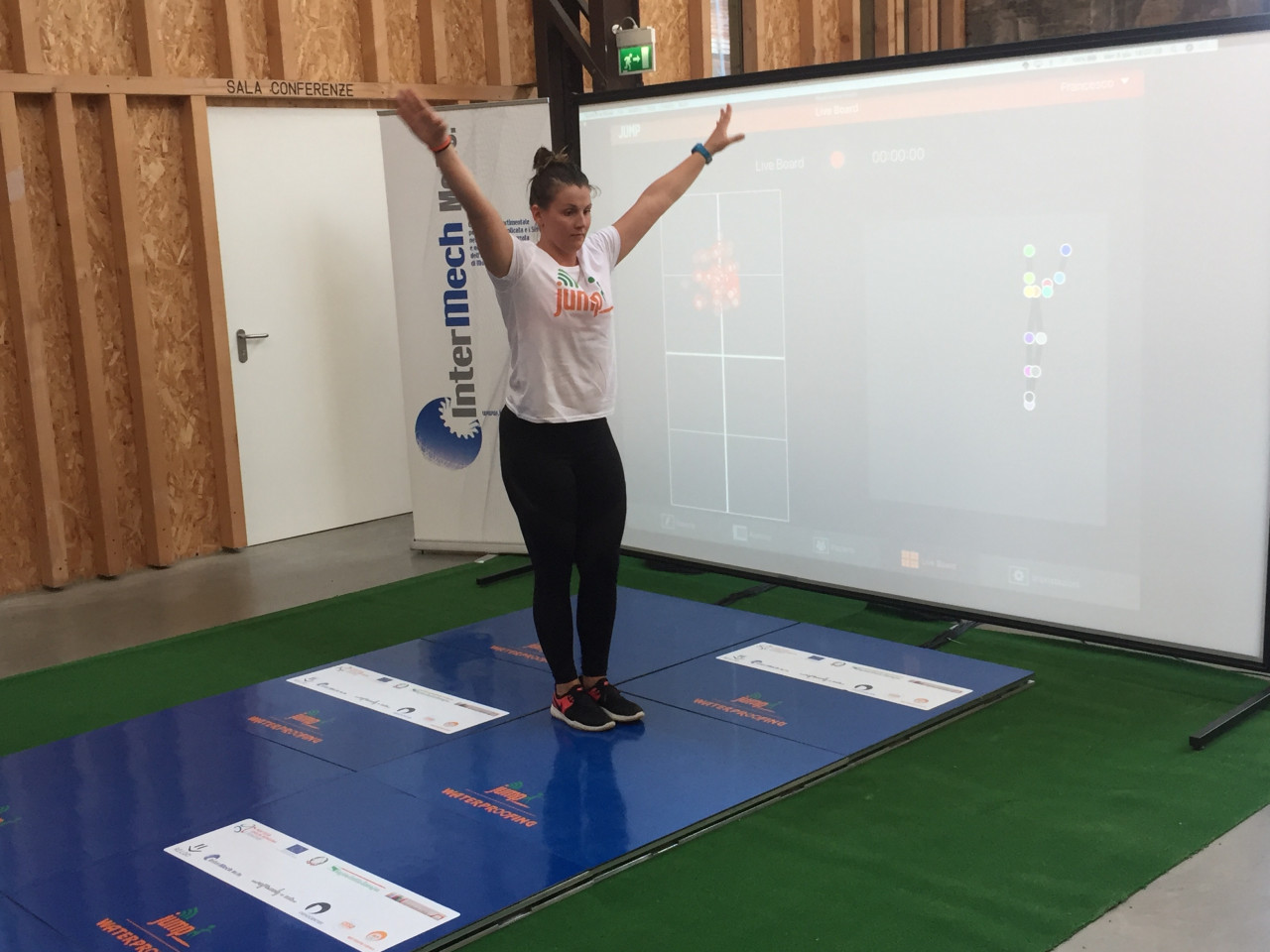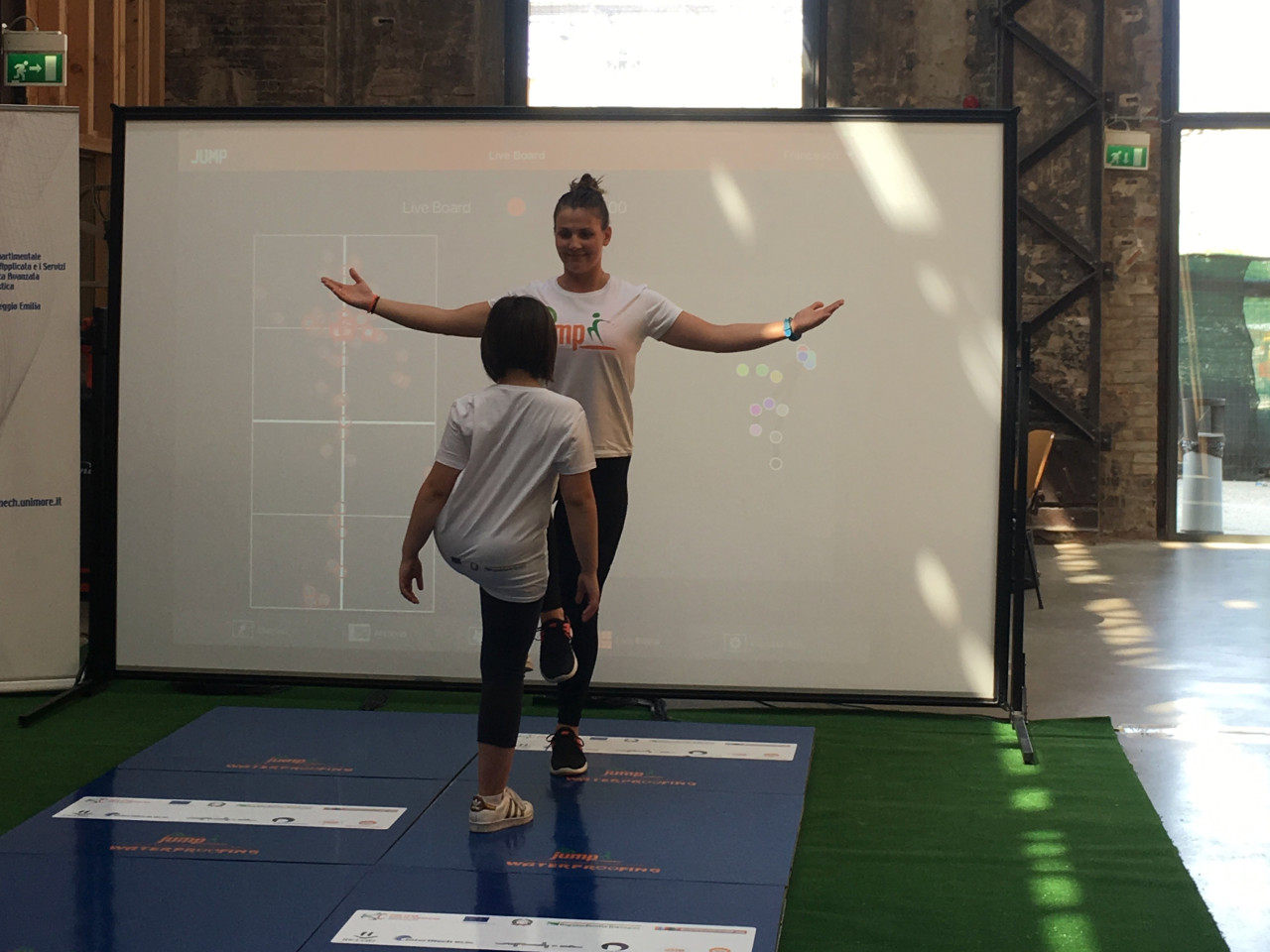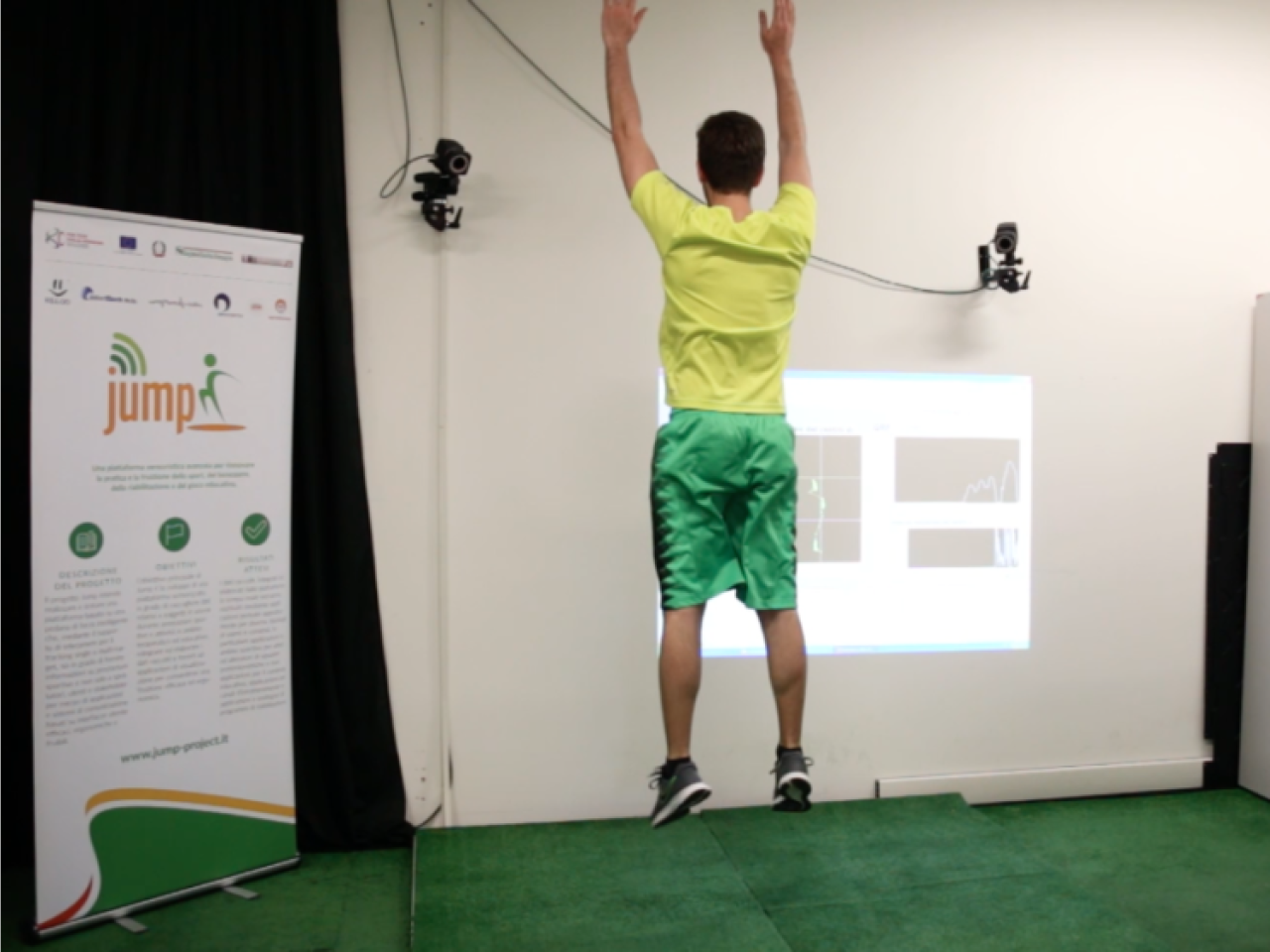The JUMP project has developed and tested a sensorized platform based on an intelligent platform of force that, through the support of cameras for tracking, is able to provide information on sports performance through effective, ergonomic and usable user interfaces in sports, rehabilitation and education. The sensorized platform is able to collect data on subjects in action during activities ranging from sports performances and activities in education and therapy, and to integrate and process such data. The data is then provided to visualization applications to enable effective and ergonomic use for different types of users and contexts: sports applications for athletes and coaches of professional and non-professional teams, applications for the educational context and applications to support rehabilitation programs.
 JUMP platform
JUMP platform
JUMP introduces important innovations in industrial processes in health care, contributing to innovative medical research and efficient and effective health care, for example by anticipating the diagnosis of physical or motor diseases and increasing therapeutic effectiveness.
The platform supports the creation of innovative systems for the manufacture of health products: crossing sensor data allows a multi-perspective analysis, which serves as a basis for the study of medical devices and prostheses. The Jump system provides different types of investors and customers, in particular sports clubs, gyms and fitness centers, research centers engaged in research in sports, rehabilitation centers and health facilities.
 JUMP platform example
JUMP platform example
The platform is currently used daily in rehabilitation at the CTR (Centre for Rehabilitation Therapy) in Reggio Emilia.
During the project, a prototype of a 4 m2 force-instrumented floor was installed at the CTR, inside the local postural analysis laboratory. At the same time, the floor was completed with a 4-chamber optical motion-capture system, in order to obtain the right combination of kinematic and dynamic analysis. The sizing of the electronic components for the acquisition and processing of the signal coming from the measurement chain was optimized, and the software for the reconstruction of the instantaneous kinematic behaviour (position, speed and acceleration) of the thrust centre of a subject moving on the force floor was completed. Single and multi-target tracking algorithms and techniques have been implemented and the system has been enriched with an estimate of the occluded parts. In addition to positional and depth data, algorithms that work on RGB cameras even of low quality, for example webcam cameras, have been implemented. A dataset of sports images related to basketball has been created and enriched, and it also includes information related to events and gestures. The prototype of the application for data visualization was developed for tablet devices, initially iPad, and presents several features including user login, selection and recording of exercises, multi-perspective analysis, session archive and patient archive.
INTERMECH-Mo.Re. Softech ICT RE:Lab DEMOCENTER Waterproofing Play+
From the collaboration between partners, has been possible to develop new diagnostic methodologies based on the use of the instrumented floor and to populate the app for its management with exercises and analyses of the medical-physiotherapic field. The digital technologies used are KETs in the acquisition, data processing and use: the sensor data are precise, analyzable in real-time and reusable
 Application example JUMP platform
Application example JUMP platform

